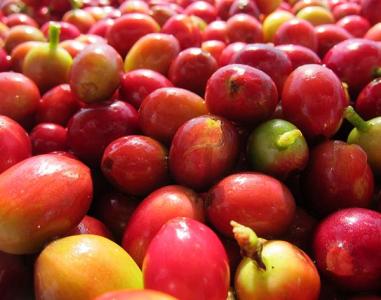Steps to roast coffee beans-Starbucks concentrated roasted coffee beans
Steps to roast coffee beans-Starbucks concentrated roasted coffee beans
What does this have to do with packing? This important question requires a glimpse into the mysteries of the cell wall structure in coffee beans. The cell walls in coffee beans are only about 5 microns thick, and they can withstand the pressure of 140psi (pounds per square inch), which mainly comes from carbon dioxide produced during the second half of the baking process. Finally, a few days after the baking cycle, the so-called gas release process begins, and carbon dioxide begins to dissipate from the coffee beans. The exhaust process of coffee beans is much longer than that of coffee powder after grinding, and the exhaust phenomenon of coffee beans will also shorten the life of coffee beans. In the early exhaust process, the air will replace the escaped carbon dioxide at about 1:1, and the air contains about 21% oxygen, so the air absorption will quickly oxidize the coffee, the coffee will continue to exhaust, the internal pressure of the coffee beans will decrease, and the exhaust speed will begin to slow down. Over time, 12-ounce bags of baked beans release more than half a cubic foot of carbon dioxide.
What about the impact on the development of taste? Experiments show that the change in the taste of coffee beans in the first five days is greater than that in the next five days, mainly because exhaust is the most active in the first five days after baking.
The reason for introducing these two ways is that the air pressure is different in different places and different seasons, and there will be a slight change. The friends of San Douke can make appropriate adjustments according to this.
To sum up, it is steaming below 30, and 30 is adjusted up according to the smoke discharge. An important index about the smoke discharge is the comparison between the rising speed of exhaust air temperature and the rising rate of bean temperature.
A general rule is that the exhaust temperature rises faster than the bean temperature, the beans will taste clean but the flavor will be weak, the exhaust temperature will rise more slowly than the bean temperature, and the beans will have a stronger flavor but more muggy smell.
Inner pot piece
The choice of the material of the inner pot is the most tangled place when making the product. in the initial design, because the stainless steel material can be rolled up and welded, it is convenient to manufacture, while the cast iron material has a great initial investment, so stainless steel has become a very tempting choice. but after the test, it is found that the stainless steel inner pot can not evenly transfer heat to the whole inner pot, resulting in some points that will overheat and scald coffee beans. A good stainless steel pot is a composite structure, with more than three layers at the bottom, with an outer layer of stainless steel at the bottom, with a copper plate in the middle as an important heat conduction layer to disperse the uneven heat energy at the bottom of the pot, so that the internal stainless steel layer can be heated evenly. But this kind of technical solution is used in the inner pot of the roaster, we really can't do it.) (PS: the three-layer structure requires a large punch to integrate the structure and exhaust air. Moreover, what people do is a flat plate, and the roaster is an inner pot.)

Important Notice :
前街咖啡 FrontStreet Coffee has moved to new addredd:
FrontStreet Coffee Address: 315,Donghua East Road,GuangZhou
Tel:020 38364473
- Prev

Description of the characteristics and flavor of Latin American coffee beans the regional grinding scale of taste treatment
The grinding scale of Latin American coffee beans used to be the second largest coffee producer only in Brazil, but Colombia, which has been overtaken by Vietnam and ranked third in the world, is the largest supplier of washed beans in the world. Colombia has become synonymous with good coffee after years of image building. Although the flavor is balanced, thick and famous
- Next

Anatomical diagram of coffee beans-step diagram of hand-brewing coffee from how coffee beans grow
Anatomical diagram of coffee beans-illustrating the steps of hand-brewed coffee the concept of premium coffee first appeared in 1974, when Erna Knutsen believed that boutique coffee was produced in a special microclimate environment with the best flavor, but boutique coffee is not necessarily luxury top coffee. According to the definition of the American Fine Coffee Association (SCAA), the cup
Related
- Guji coffee producing area of Guji, Ethiopia: Humbela, Shakiso, Wulaga
- What is the most expensive variety of Qiloso in BOP multi-variety group?
- How to store the coffee beans bought home?
- Why are Yemeni coffee beans so rare now?
- Ethiopian Sidamo all Red Fruit Sun Sun Santa Vini Coffee beans
- SOE is mostly sour? What does it mean? Is it a single bean? what's the difference between it and Italian blending?
- Is Italian coffee beans suitable for making hand-brewed coffee?
- How to choose coffee beans when making cold coffee? What kind of coffee beans are suitable for making cold coffee?
- Just entered the pit to make coffee, what kind of coffee beans should be chosen?
- Can only Japan buy real Blue Mountain Coffee? What are authentic Jamaican Blue Mountain coffee beans?

